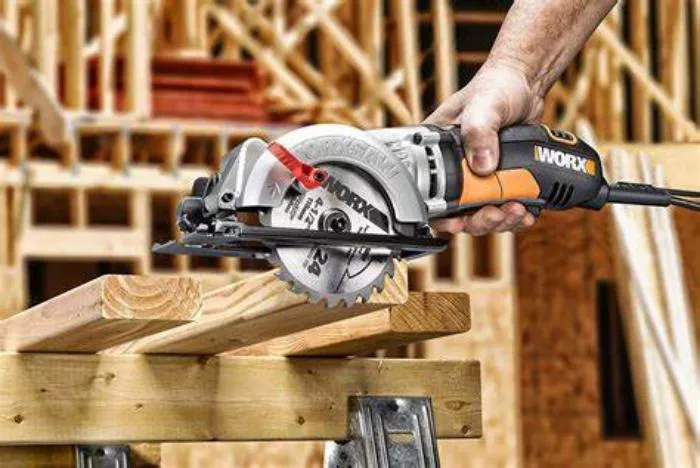Circular saws primarily get classified by their blade diameter. This measurement determines cutting depth and material handling capacity. Standard sizes follow imperial measurements in the United States while metric units dominate elsewhere.
The blade diameter directly affects performance. Larger blades cut deeper but require more powerful motors. Smaller blades offer better control for precision work. Manufacturers design saws around specific blade sizes for optimal balance.
Most circular saw blades range between 4 inches and 16 inches in diameter. However, certain industrial applications use even larger specialty blades. The common sizes cater to different user needs from DIY projects to professional construction.
Understanding blade sizes helps users select the right tool. Matching the saw to your project requirements prevents frustration. Always consider material thickness when choosing blade diameter.
Most Common Circular Saw Sizes
4-1/2 Inch to 5-1/2 Inch Compact Saws
Compact circular saws use 4-1/2 to 5-1/2 inch blades for portability. These lightweight tools excel in overhead work and tight spaces. Their small size makes them popular among electricians and finish carpenters.
The reduced cutting depth (about 1-1/2 inches) limits material thickness. However, these saws handle plywood and dimensional lumber efficiently. Many feature battery power for cordless convenience on job sites.
These saws often include specialty blades for metal cutting. The smaller diameter allows faster blade speeds with less motor strain. DIY enthusiasts appreciate their manageable size for home projects.
6-1/2 Inch to 7-1/4 Inch Standard Saws
The 7-1/4 inch circular saw represents the most common size worldwide. It balances cutting capacity (about 2-1/2 inches) with manageable weight. Nearly all major manufacturers produce this size for general construction.
6-1/2 inch models provide slightly less cutting depth for reduced weight. Many cordless options use this size to conserve battery power. Both sizes handle 2x materials and sheet goods effectively.
These mid-size saws accept various blade types. Users can switch between rip, crosscut, and combination blades easily. The versatility makes them ideal for framing, deck building, and remodeling.
8-1/4 Inch to 10 Inch Heavy Duty Saws
Larger 8-1/4 to 10 inch blades suit professional applications. They cut through 4x lumber and thicker materials in one pass. The increased diameter requires more powerful motors, adding weight.
Contractors use these for timber framing and large-scale projects. The deeper cut capacity reduces multiple passes on thick stock. Some feature worm drive designs for enhanced torque.
These saws demand proper handling due to their size. Beginners should practice with smaller saws first. The cutting depth exceeds 3 inches, requiring extra safety precautions.
12 Inch to 16 Inch Industrial Saws
Industrial-grade circular saws employ 12-16 inch blades for specialized tasks. Concrete cutting, tree felling, and steel fabrication use these heavy-duty tools. They require substantial power sources.
The massive blades generate significant torque and kickback potential. Only trained professionals should operate these saws. Custom stands and guides often support the extra weight during operation.
These sizes appear in dedicated metal-cutting circular saws. The large diameter maintains proper surface speed on tough materials. Special blade compositions withstand extreme conditions.
Factors Influencing Circular Saw Size Selection
Material Thickness Requirements
The primary consideration involves your typical cutting depth needs. Measure the thickest material you’ll regularly cut. Choose a saw providing at least 1/4 inch extra depth capacity.
Thin materials like paneling work well with compact saws. Standard 2x lumber requires 6-1/2 inch or larger blades. For timber beams or stacked cuts, consider 8-1/4 inch models.
Remember that blade guards reduce maximum depth slightly. Test cuts help verify actual capacity. Multiple shallow passes sometimes work better than one deep cut with undersized blades.
Power Source Considerations
Corded circular saws handle larger blades more effectively. The consistent power supports bigger diameter cutting. Battery-powered models often use smaller blades to conserve energy.
Brushless motor technology improves cordless saw performance. However, physical blade size limitations remain. Gas-powered circular saws typically employ the largest blades for remote jobs.
Voltage ratings affect suitable blade sizes too. Higher voltage cordless tools can spin larger blades effectively. Check manufacturer recommendations for your specific model.
Frequency of Use and Portability
Professional contractors using saws daily prefer standard 7-1/4 inch models. The balance of power and cutting depth meets most job demands. Occasional users might opt for lighter 6-1/2 inch versions.
Jobs requiring frequent transport benefit from compact sizes. Roofers and electricians often choose 5-1/2 inch or smaller saws. Consider storage space if mobility matters.
Heavy saws cause fatigue during extended use. Test different weights at your local tool supplier. Ergonomics become crucial for repetitive cutting tasks.
Specialty Cutting Applications
Certain materials demand specific blade sizes. Metal-cutting circular saws frequently use 12-14 inch diameters. The larger size maintains proper surface speed on hard metals.
Masonry saws employ 14-16 inch diamond blades. The diameter provides adequate cooling for abrasive cutting. These specialized tools follow different size conventions than wood saws.
Concrete saws often feature the largest diameters. The mass helps maintain cutting momentum through dense material. Always match the saw size to your particular application.
Conclusion
Milwaukee makes excellent circular saws for all needs. The M18 Fuel 7-1/4 inch is a top overall choice. The 6370-21 offers great corded power. The M12 Fuel works well for light duty tasks.
Consider your specific requirements when selecting. Milwaukee’s range ensures a good option exists. Their saws deliver professional results project after project.
Investing in a Milwaukee circular saw means getting quality. The tools perform well and last long. Choose the model that fits your work needs best.
Relate topics:
- Home Depot Circular Saws: Performance, Features, and Price Comparison
- 5 Best Milwaukee Circular Saw
- Top 5 Miter Saws of 2024: Choosing the Right Model for Your Projects

